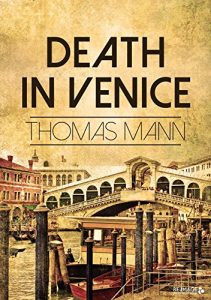Death in Venice is a novella written by the German author Thomas Mann, first published in 1912 as Der Tod in Venedig.[1] The work presents a great writer suffering writer's block who visits Venice and is liberated, uplifted, and then increasingly obsessed, by the sight of a stunningly beautiful youth. Though he never speaks to the boy, much less touches him, the writer finds himself drawn deep into ruinous inward passion; meanwhile, Venice, and finally, the writer himself, succumb to a cholera plague. The novella is powerfully intertextual, with the chief sources being first the connection of erotic love to philosophical wisdom traced in Plato's Symposium and Phaedrus, and second the Nietzschean contrast between the god of restraint and shaping form, Apollo, and the god of excess and passion, Dionysus.
Este sitio es seguro
Usted está en un sitio seguro, habilitado para SSL. Todas nuestras fuentes son constantemente verificadas.



